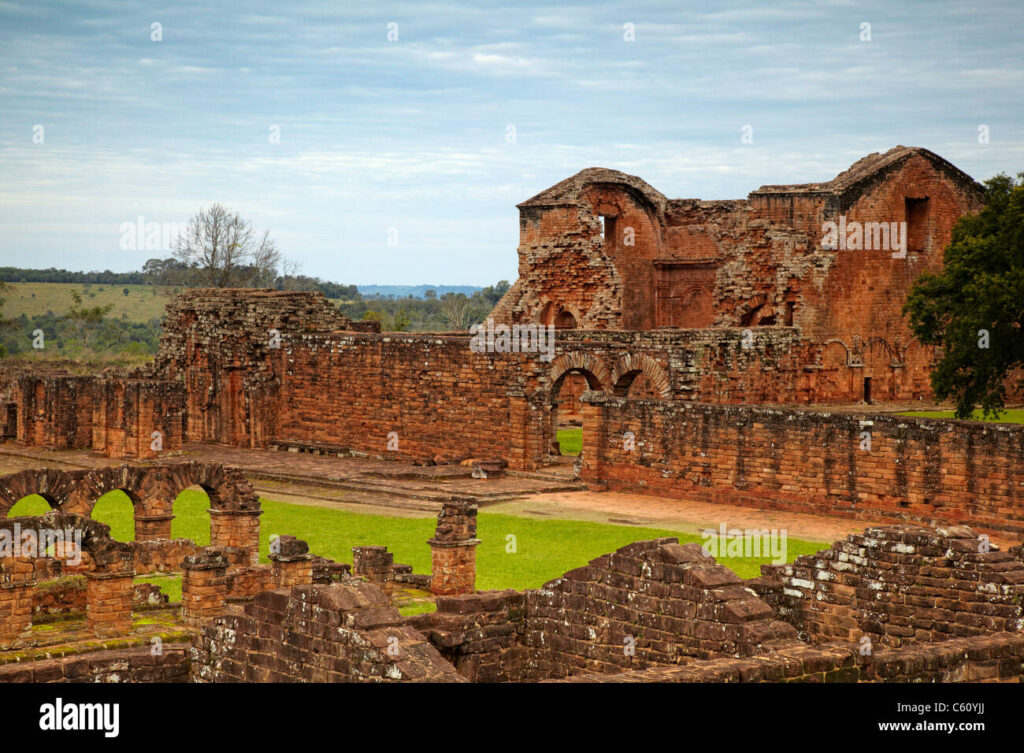Introduction
When it comes to the best historical sites in Paraguay, the Jesuit Missions of La Santísima Trinidad de Paraná are often overlooked. Founded in the 17th century by the Jesuit Order, these missions were part of a series of settlements established in the region to convert the local Guaraní people to Christianity. They are a great example of the blending of two cultures, with the Guaraní people adapting the European architecture to their own needs. Although the original missions have been destroyed, the ruins are an incredible glimpse into the past and are a must-see for anyone interested in Paraguay’s history.
History of the Jesuit Missions of La Santísima Trinidad de Paraná
The Jesuit Missions of La Santísima Trinidad de Paraná were founded in 1609 by the Jesuit Order of Catholic priests. They were part of a series of settlements, known as the Guaraní missions, which were established to convert the local Guaraní people to Christianity and teach them European agricultural techniques.
The mission at La Santísima Trinidad de Paraná was the largest of the settlements, and at its peak, it had over 5,000 people. The mission was built in the Baroque style, with many of the buildings being constructed from wood and adobe. The mission also had a large church, which was one of the most impressive structures in the settlement.
Unfortunately, the mission was destroyed by the Portuguese in 1756, as part of their efforts to suppress the Guaraní people. The ruins of the mission still remain, and although they are not as impressive as they once were, they are still an incredible sight to behold and a great reminder of the past.
Architecture of the Jesuit Missions
The architecture of the Jesuit Missions of La Santísima Trinidad de Paraná was a unique blend of European and Guaraní styles. The mission was built in the traditional Baroque style, with many of the buildings being constructed from wood and adobe. The mission also had a large church, which was one of the most impressive structures in the settlement.
The Guaraní people also contributed to the architecture of the mission, adapting the European designs to their own needs. They built adobe houses, which were smaller than the European buildings, and constructed terraces for agriculture. They also used their own building techniques, such as adobe brick and wattle and daub.
What to See at the Ruins
Despite the fact that the mission has been destroyed, there are still many interesting things to see at the ruins. The ruins of the mission are still an impressive sight, and it is possible to get a sense of what the mission was like in its heyday.
The most impressive structure at the ruins is the church, which still stands as a reminder of the mission’s past. Other interesting features include the old adobe houses, the terraces, and the foundations of the mission’s walls. There is also a museum, which houses many interesting artifacts from the mission’s history.
Conclusion
The Jesuit Missions of La Santísima Trinidad de Paraná are an incredible insight into Paraguay’s past. Although the original mission has been destroyed, the ruins are still an impressive sight and are an important reminder of the blending of two cultures. Whether you are interested in architecture, history, or culture, the Jesuit Missions of La Santísima Trinidad de Paraná are a must-see for anyone visiting Paraguay.

